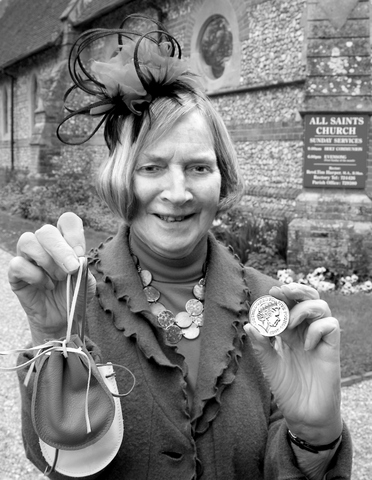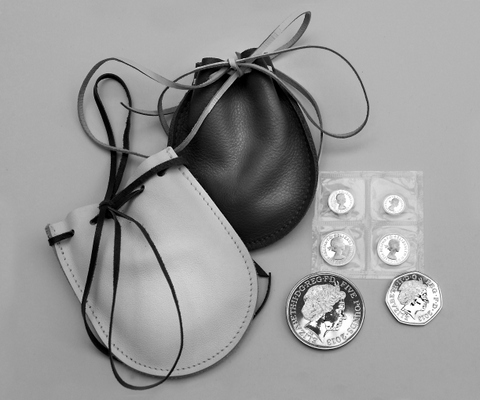Dumpy Swerling had the honour of receiving Maundy Money from the hand of the Queen in Christchurch Cathedral on Maundy Thursday this year. Her nomination came from the Bishop of Oxford in recognition of over 50 years of devoted community service.
This article describles the origins of Maundy Money


Photographs by John Jefford
The word Maundy is derived from the Latin mandatum (command) and lies behind the name Maundy Thursday (the day before Good Friday in the Christian calendar). John 13:34 tells of Christ at the Last Supper giving his disciples a new commandment, that they should love one another. This command has been symbolized since at least the 13th century (the first record is of King John – who, given this, was clearly not a wholly Bad King) by the sovereign displaying humility to a selection of the poor of his kingdom. The ceremony initially took the form of washing the feet of the chosen poor (after courtiers had washed them several times first) and then distributing alms as money, food and clothing. James II was the last monarch to wash feet and the food and clothing elements have also subsequently fallen by the wayside.
Today, the Queen gives two purses of money to the same number of men and women as her current age (so 87 of each this year). They are chosen for services to their church or local community. A white purse contains the Maundy Money itself – sterling silver coins in denominations of 1p, 2p 3p and 4p, in a total amount summing to the Queen's current age -- while a second, red, purse contains the monetary equivalent of the previously distributed food and clothing. This sum has been deemed to be worth £5.50 for some years now.
Although most monarchs in the 18th and 19th centuries delegated the annual task to court officials, Elizabeth II has been absent on only four occasions since she came to the throne.
Dick Ware